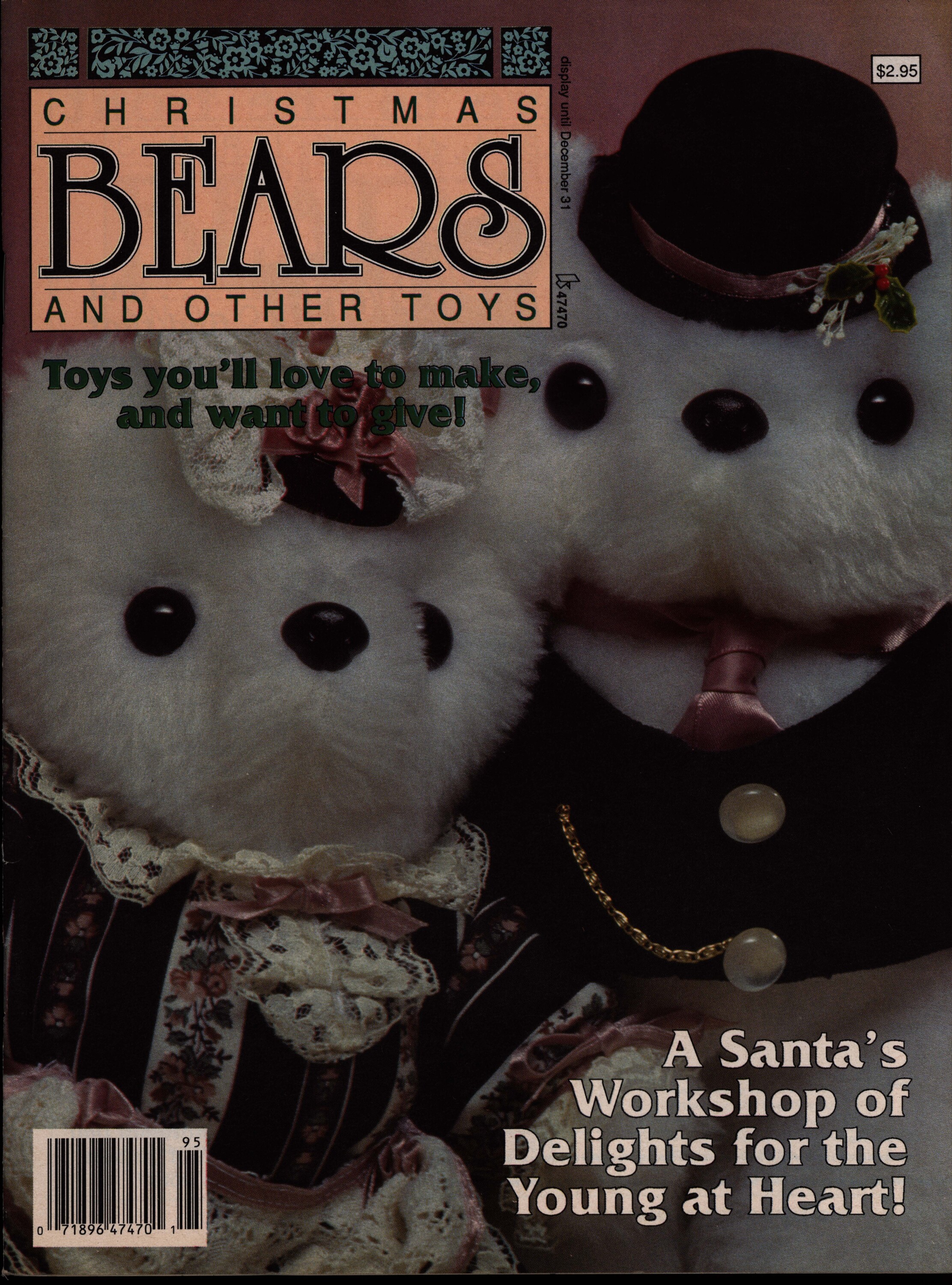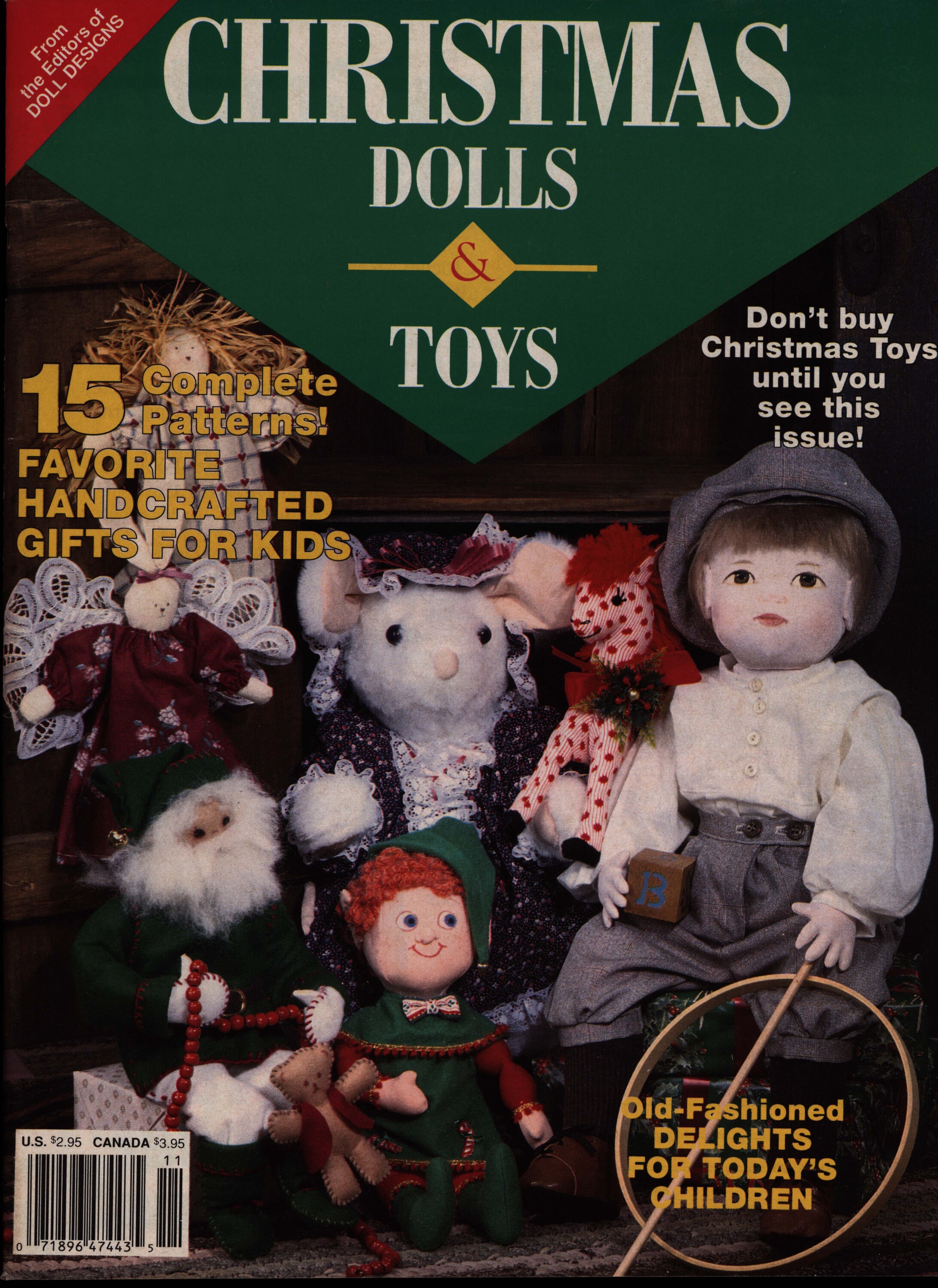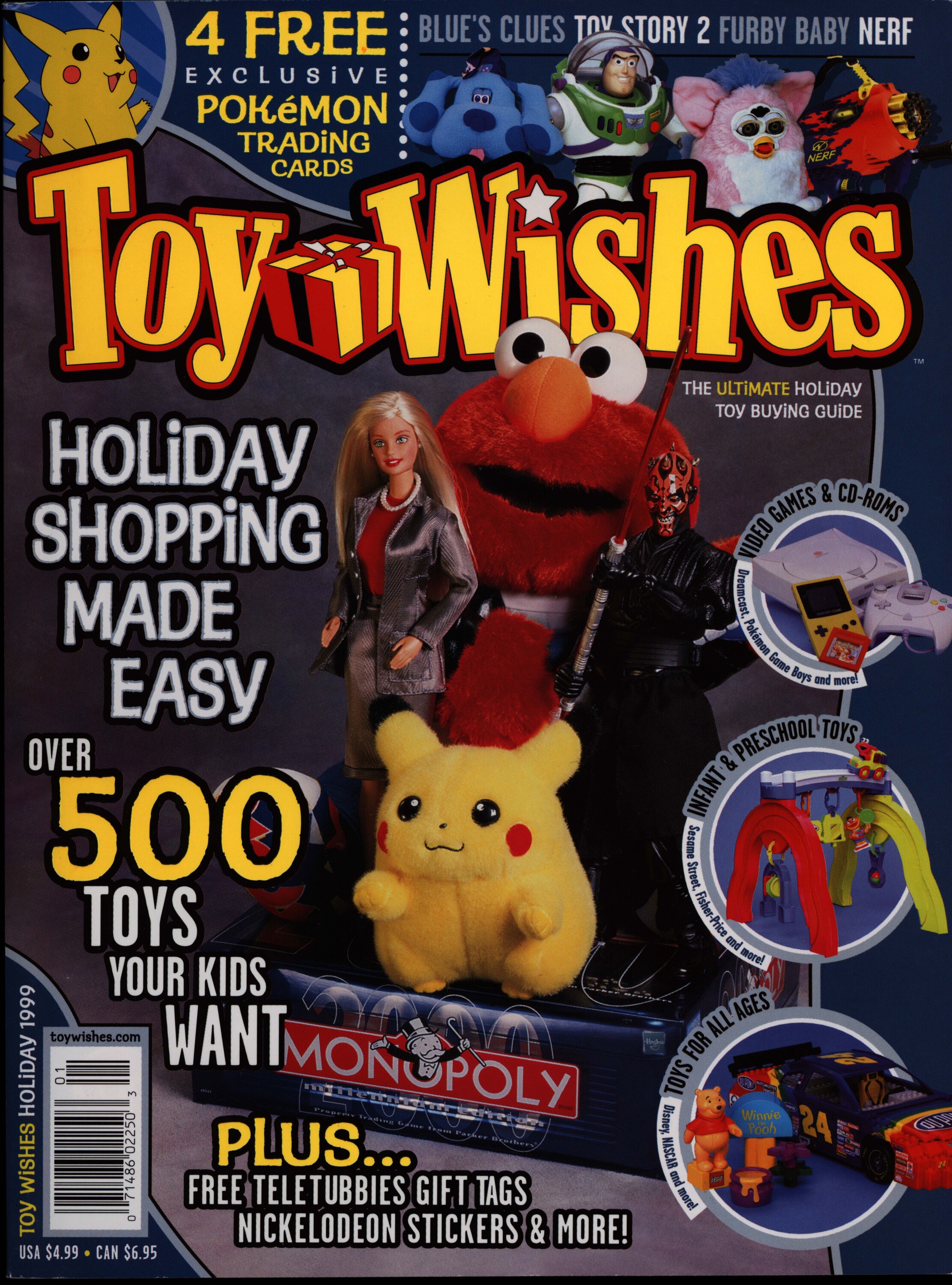Toys and Collectibles, 1987-2006
Holiday Shopping
Christmas is one of the largest commercial holidays in the United States. Even those who are not religious often get caught up in the Christmas craze and retailers have long used the holiday as a pretext for increased marketing and sales for not just Christmas products, but all consumer goods as well. These magazines were often targeted to the parents of children, rather than towards children themselves, as these publications were viewed as sales and trend guides as opposed to interest or topic focused magazines.
Christmas buying guides have been commonplace for decades and are often designed to reach a wide audience and provide as comprehensive of a guide as possible. These guides, however, are often too general to be more than simple price catalogues, as opposed to genuine supplements for parents to use as guides to the toys that their kids may want. Their general breadth, and wide range of topics provided a wide range of choice for what to look into based on a litany of factors as they related to each parent and their children.
Included in this gallery are three magazines which highlight those toys which were influenced by or influencing the holiday spirit of their time. Two magazines center around things like dolls, stuffed bears, and how to craft similar toys for the Christmas season, as well as a third magazine around more modern, mass-market products from retailers which were popular at the time.
Christmas Bears and Other Toys was published by House of White Birches, Inc. This magazine boasts instructions for “toys [the reader] will love to make and want to give”. The focus on hand-crafted dolls and bears expanded the audience of this magazine to readers in a variety of socioeconomic classes, including all crafters to give the opportunity for affordable Christmas gifts for children.
The publisher, House of White Birches, Inc (founded in 1947) owned and published many crafting and cooking magazines, as well as a few collector’s guides, snack catalogues, and a magazine containing inspirational stories. All magazines were targeted toward women, primarily stay at home mothers, and interconnected advertisements for related magazines. It was later acquired by DRG and used to start their publishing division in 1985 before all of DRG’s publishing division and their related acquisitions were consolidated under the Annie’s name in 2012.
Another publication from House of White Birches, Christmas Dolls and Toys features dolls and old fashioned delights for “today's” children. This magazine advertised handcrafted dolls and other toys as a replacement for Christmas shopping and includes an advertisement for Quilting Little Hanna from the editors of Quilt World magazine and an advertisement for a subscription to International Doll World.
Though created by the same publisher, these two magazines serve to show the different markets such publishers were attempting to reach by diversifying the content that they discussed in different issues. Additionally, crafts such as these were often interchangeable and could be adapted as necessary for different projects. These projects, often marketed towards women and girls, sought to teach certain skills that may prove useful in the future such as sewing and design.
Toy Wishes: The Ultimate Holiday Toy Buying Guide was launched in 2001 by publisher Wizard Entertainment Inc. and served to help parents with holiday shopping for their kids. The Holiday 1999 issue featured here included a number of items popular at the time including Pokemon, Barbie, Nerf, Blue’s Clues, and Furby, as well as what the editors referred to as the “hot dozen”: the twelve toys the editorial board predicted to be the blockbuster toys of 1999. In 2011, all of Wizard Entertainment Inc. publications went digital, followed by a dissolution of the company ten years later in 2021.


